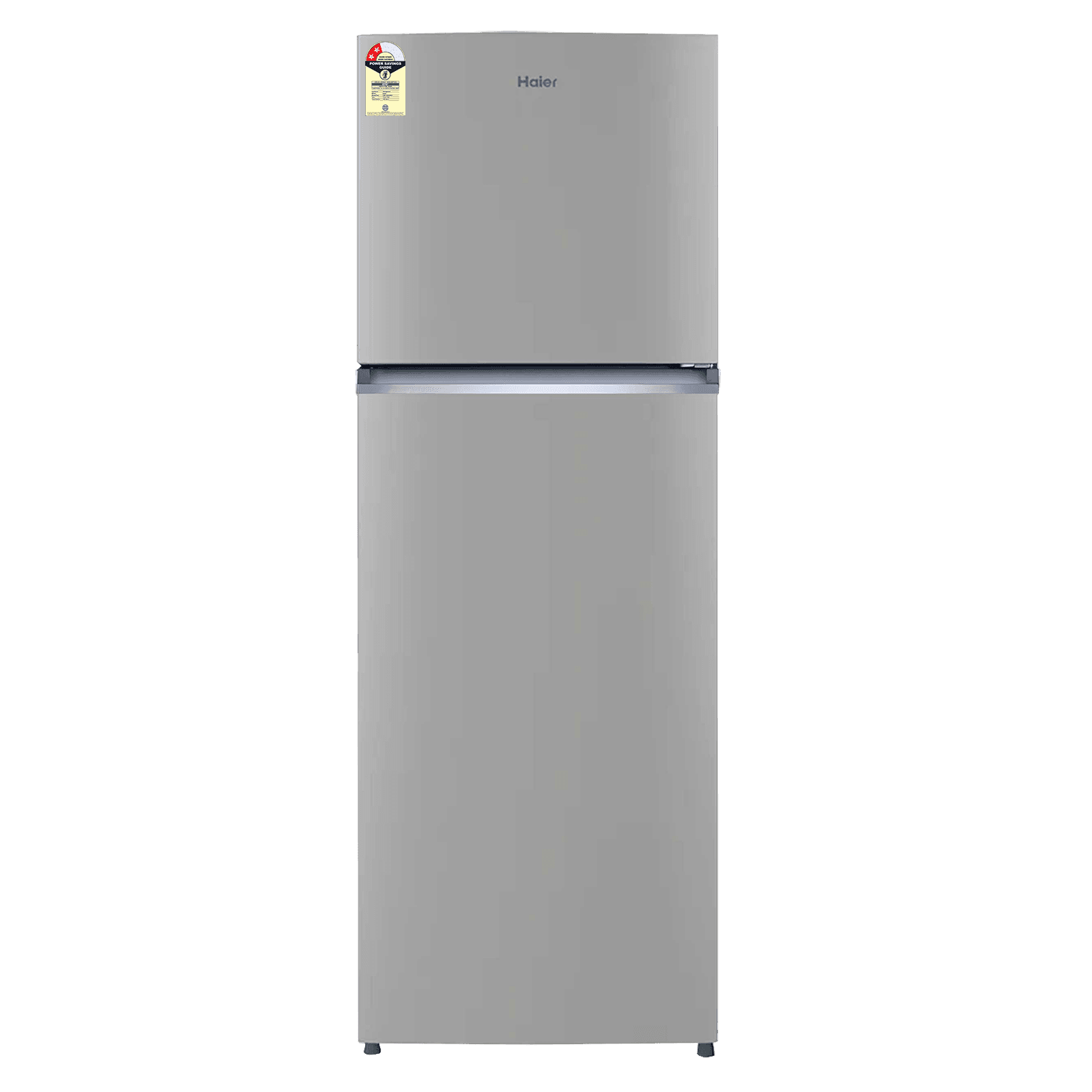
Home Appliances
•05 min read

Buy Haier HRF-2902 240 Litres 2 Star Frost Free Double Door Refrigerator with Stabilizer Free Operation (HRF-2902IEBS-P, Brushline Silver) online at best prices from Croma. Check product details, reviews & more. Shop now!
Ever wondered how much electricity your deep fridge consumes and how to calculate it accurately? In this guide, you'll learn everything from the basics of wattage to a step-by-step process that helps you understand the energy requirements of your deep freezer. With detailed insights, practical examples, and useful tips for optimising appliance performance, this post is designed to help you manage energy consumption smartly and reduce your monthly electricity bill.
Wattage is the unit used to measure the power consumption of appliances, including deep fridges. Essentially, it tells you how much energy an appliance uses per unit of time. A higher wattage typically indicates greater energy consumption, which in turn can lead to higher electricity costs. Understanding the deep fridge wattage is crucial not only for budgeting but also for evaluating the overall efficiency of the appliance. The concept of wattage is a basic yet vital aspect of home appliance power ratings.
Deep fridges are designed for long-term food storage, which means they run continuously and maintain a steady low temperature. This constant operation makes their wattage an essential measure of energy consumption. Unlike regular refrigerators that might have intermittent cooling cycles, deep fridges work relentlessly, making even small differences in wattage critical for the eventual electricity usage of a household. For those curious about fridge energy usage, recognising the particular needs of deep fridges can help in understanding their unique power demands.
The size and capacity of your deep fridge play a significant role in its energy consumption. Models are available in various capacities, such as 100L, 300L, and 500L. A larger capacity generally requires more power, and when you check the specifications, you might come across terms like deep freezer power consumption in watts. Keeping an eye on these figures can guide you in selecting an appliance that fits your energy needs and budget.
Usage frequency and external factors such as ambient temperature and placement also affect energy consumption. For instance, placing your deep fridge near a heat source or in direct sunlight increases the load on the appliance, leading to higher power usage compared to a well-ventilated spot. This consideration is similar to questions like, 'Does a freezer in the garage use more electricity?' By understanding these external influences, you can better optimise your appliance's placement for lower electricity usage of deep freezer units.
Another key consideration is the energy efficiency rating. Appliances with better ratings are designed to use energy more efficiently, which can be a boon for both your wallet and the environment. When comparing different units, look for indicators like appliance energy efficiency scores. Energy-efficient deep freezers can significantly lower the deep freezer electricity cost over time, making them a smart long-term investment.
First, check the appliance's label or the specifications provided in the manual. You need the voltage and current (amps) details to kick-start your calculation. Several online resources, including a deep fridge wattage calculator, can further simplify this process. Knowing exactly what your appliance demands ensures you have all the necessary numbers to work with.
The basic formula to calculate deep fridge wattage is: Wattage = Voltage × Current (Amps). For instance, if your deep fridge runs on 220 volts and draws 2 amps, the power consumption is calculated as 220 volts × 2 amps, which equals 440 watts. This simple formula can be applied to any home appliance, providing you with a clear idea of its energy demands.
Once you have calculated the wattage, the next step is to estimate how much power it uses daily and monthly. Multiply the wattage by the number of hours the appliance operates per day. For example, if it works for 24 hours, then daily power consumption becomes 440 watts × 24 hours = 10,560 watt-hours per day. Converting this to kilowatt-hours (by dividing by 1000) gives you 10.56 kWh per day. Monthly usage can then be estimated by multiplying the daily usage by 30. Such calculations let you monitor your fridge energy usage closely and plan your budget more accurately.
Did You Know? Energy Ratings Can Save You Money!
Appliances with higher energy efficiency ratings reduce electricity usage by up to 30%, leading to significant savings over time. Always check the energy label before purchasing a deep freezer or fridge.
Proper placement of your deep fridge matters. Avoid putting it near heat sources or in areas with poor ventilation. Keeping the fridge out of direct sunlight and away from other appliances that emit heat can significantly reduce its power consumption. Even small adjustments in this area can contribute to lowering the overall electricity usage of deep freezer units.
Ensuring that your deep fridge is set at the correct temperature and defrosting it regularly can help maintain efficiency. A frost build-up forces the appliance to work harder, increasing the deep freezer power consumption per hour. Regular maintenance, such as defrosting and checking seals, is crucial for prolonging the appliance's lifespan and keeping energy costs in check.
When selecting a new deep fridge, prioritise models with top-notch energy ratings. Energy-efficient deep freezers not only help in reducing the immediate power requirements but also save money in the long run. Looking at the wattage comparison for freezers can provide a quick reference on what to expect from different models, making it easier to balance initial costs with future savings on your electricity bill.
Comparing wattage requirements across different freezer capacities can illuminate the potential costs involved. Smaller models, such as a 100L deep fridge, inherently consume less power than larger ones like 500L variants. For example, if you’re searching for information on a 200 Ltr deep freezer power consumption in watts, you'll find that understanding these differences gives you a clearer picture of your appliance energy guide.
Understanding variations in deep fridge wattage across different models allows you to make an informed decision. By evaluating the electricity usage of deep freezer models, you can determine the long-term operational costs. Such comparisons are valuable when examining wattage comparison for freezers, as they help you balance initial purchase cost against eventual energy consumption expenses.
The electricity usage depends on the wattage, size, and efficiency of the fridge. On average, deep fridges consume between 100-400 watts per hour.
Yes, a 2000-watt generator can typically run a deep freezer, but ensure the freezer's wattage is well below the generator's capacity to avoid overloading.
It depends on the freezer's wattage. If the deep freezer operates within 1000 watts, the inverter can handle it, but additional appliances may exceed the inverter's limit.
Calculating deep fridge wattage and understanding the energy parameters involved can empower you to make more informed decisions about your appliances. By following the practical steps outlined above, you can monitor and control your energy consumption effectively. This guide supports you in not only optimising your home appliance performance but also in realising potential savings on your monthly electricity bills. With extra benefits like earning NeuCoins on every transaction on Tata Neu, shopping smartly has never been easier, ensuring a seamless and enhancing experience that caters to every lifestyle. Moreover, exploring energy tips and appliance guidelines on a trusted platform further ensures that every purchase is both a value addition and a long-term positive investment.